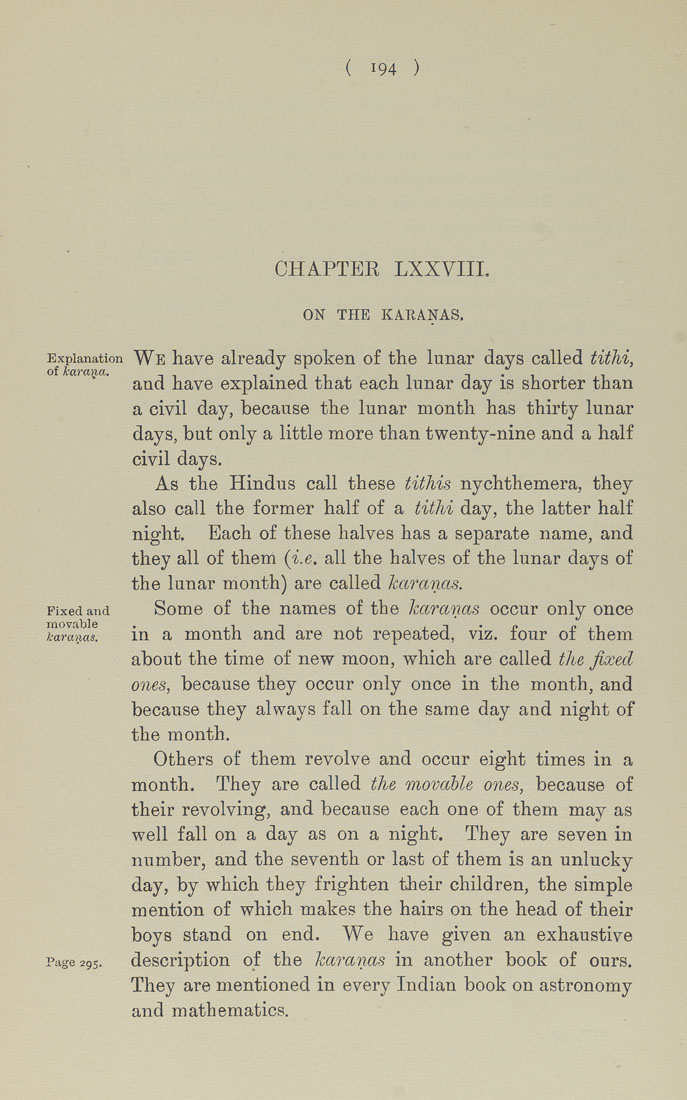Bīrūnī, Muḥammad ibn Aḥmad, Alberuni's India (v. 2)
(London : Kegan Paul, Trench, Trübner & Co., 1910.)
|
||
|
|
|
|
| Page 194 |

( 194 ) CHAPTER LXXVIII. ON THE KAEANAS. Explanation We havc already spoken of the lunar days called tithi, and have explained that each lunar day is shorter than a civil day, because the lunar month has thirty lunar days, but only a little more than twenty-nine and a half civil days. As the Hindus call these tithis nychthemera, they also call the former half of a tithi day, the latter half night. Each of these halves has a separate name, and they all of them (i.e. all the halves of the lunar days of the lunar month) are called kctrctncts. Fixed and Somc of the uames of the karctnas occur only once karanas. in a mouth and are not repeated, viz. four of them about the time of new moon, which are called the fixed ones, because they occur only once in the month, and because they always fall on the same day and night of the month. Others of them revolve and occur eight times in a month. They are called the movable ones, because of their revolving, and because each one of them may as well fall on a day as on a night. They are seven in number, and the seventh or last of them is an unlucky day, by which they frighten their children, the simple mention of which makes the hairs on the head of their boys stand on end. We have given an exhaustive Page 29s. description of the karanas in another book of ours. They are mentioned in every Indian book on astronomy and mathematics. |
| Page 194 |







